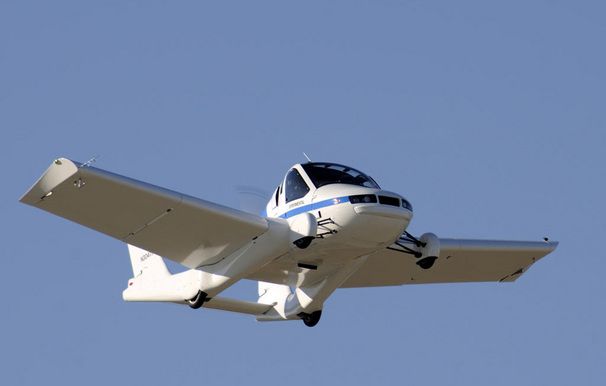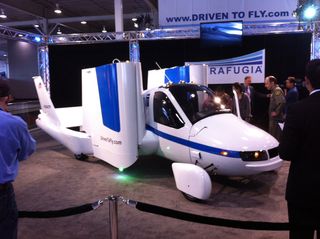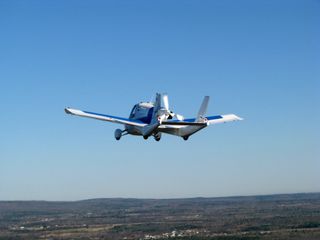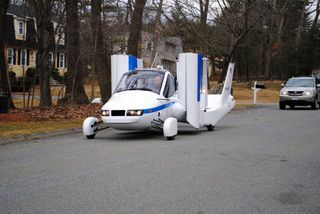Terrafugia Envisions Flying Cars on Autopilot

NEW YORK — Aviation company Terrafugia's first step toward creating a flying car does not allow drivers to hover over downtown traffic gridlock and land on city roads or highways. But the company's vision for making flying safer and more accessible could pave the way for flying cars of the future to sensibly fly themselves.
Today's big commercial jets can already fly and land themselves without much help from human pilots. Such automated flying technologies could soon take off in even smaller aircraft such as Terrafugia's "Transition" — a vehicle that is less the stuff of science fiction and more of a "street-legal airplane" that folds its wings to drive between small airports.
"The evolution in the Transition is going to come in the capability of the electronics and autopilot," said Cliff Allen, vice president of sales at Terrafugia and a trained flight instructor. "Everybody has heard of the Google [driverless] car. The technology is there to make an airplane that can virtually fly itself."

Terrafugia envisions the Transition as a transformative vehicle for sports pilots who can get certified with as little as 20 hours of flight training. Rather than abort a flight because of bad weather or press on at the risk of crashing, Transition pilots could land at one of the 5,200 public airports in the U.S. and continue their journey on the roads.
But more automated versions of the Transition could make flying even safer for inexperienced pilots or would-be flying car drivers, Allen said during a press preview here at the New York International Auto Show on April 4. Such autopilot technology could also prove necessary for any futuristic vision of flying cars that won't give air traffic controllers nightmares.
"Your co-pilot would be the systems of the airplane itself to the point where it won't let you fly into bad weather — it will take over," Allen told InnovationNewsDaily. "It will be HAL saying "You're jeopardizing the mission at this point," and will land at the nearest airport."

The Transition's concept as a "flying car" aircraft has already captured the imagination of more than just pilots. One-third of online visitors who left feedback on the company's website described themselves as having no flight training. Some have already put down $10,000 deposits to buy the $279,000 Transition when it first ships in late 2012 or early 2013.
Sign up for the Live Science daily newsletter now
Get the world’s most fascinating discoveries delivered straight to your inbox.
Terrafugia could survive selling just 40 or 50 Transitions each year, but would see far greater profits if it captures even a small part of the market normally reserved for luxury cars, Allen said. Rental fleets of Transitions could also add to the business opportunities.
The company's expertise has even come in handy for the U.S. military's dream of a "flying Humvee" that could automatically fly itself with soldiers or Marines as passengers. Terrafugia is subcontracting with AAI Corporation as part of the project launched by the Defense Advanced Research Projects Agency (DARPA) — an effort that is both ambitious and oddly less complicated in some ways compared with civilian flying car concepts.
"You don't have to worry about making it roadable in the street-legal way," Allen said.

For now, Terrafugia has begun planning how to train both flight instructors and nonpilot customers to fly the Transition, Allen said. But it keeps a steady eye on the possible future of automated flying cars — Congress has told the Federal Aviation Administration to prepare for drones flying in U.S. civilian airspace by 2015.
This story was provided by InnovationNewsDaily, a sister site to LiveScience. You can follow InnovationNewsDaily Senior Writer Jeremy Hsu on Twitter @ScienceHsu. Follow InnovationNewsDaily on Twitter @News_Innovation, or on Facebook.













